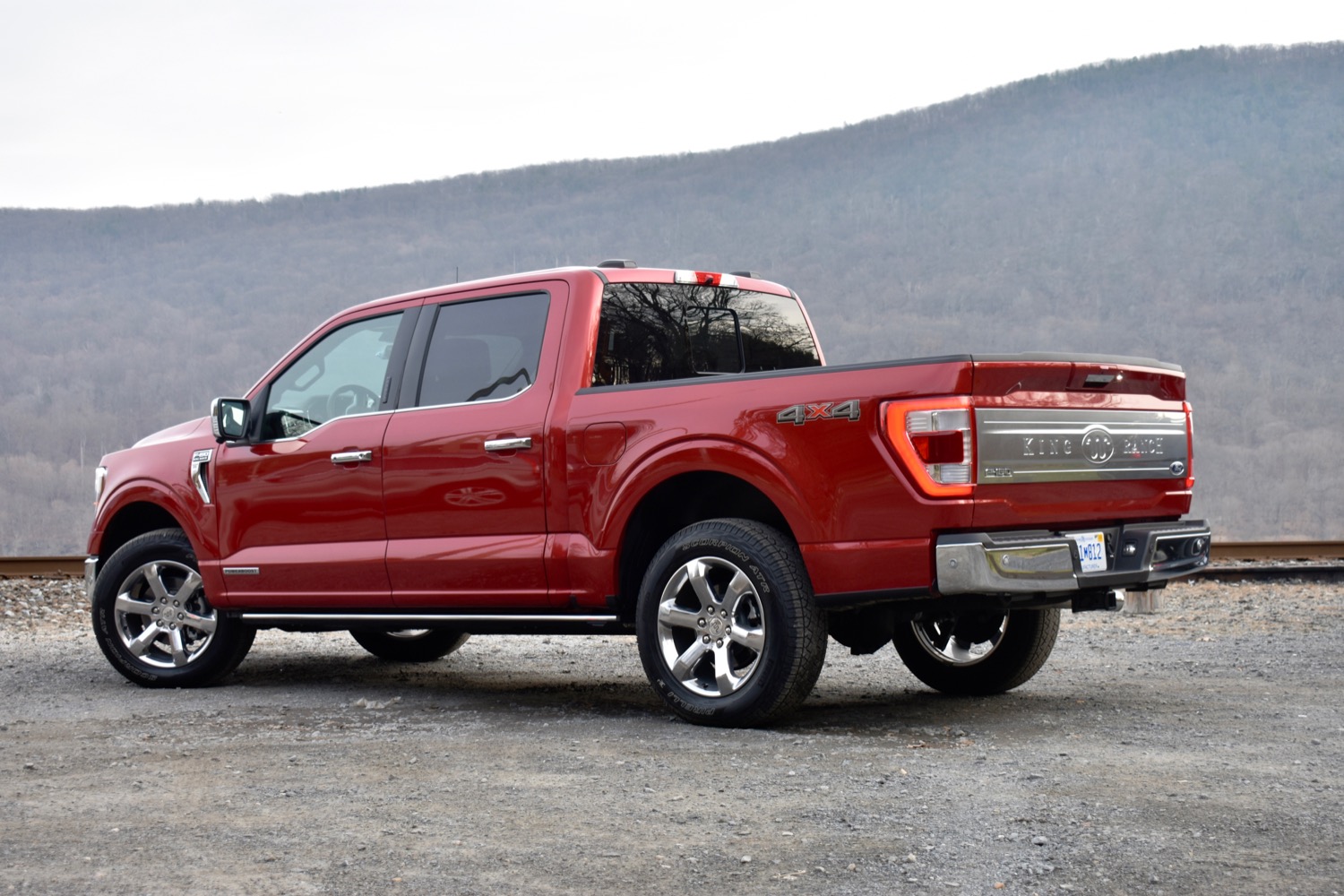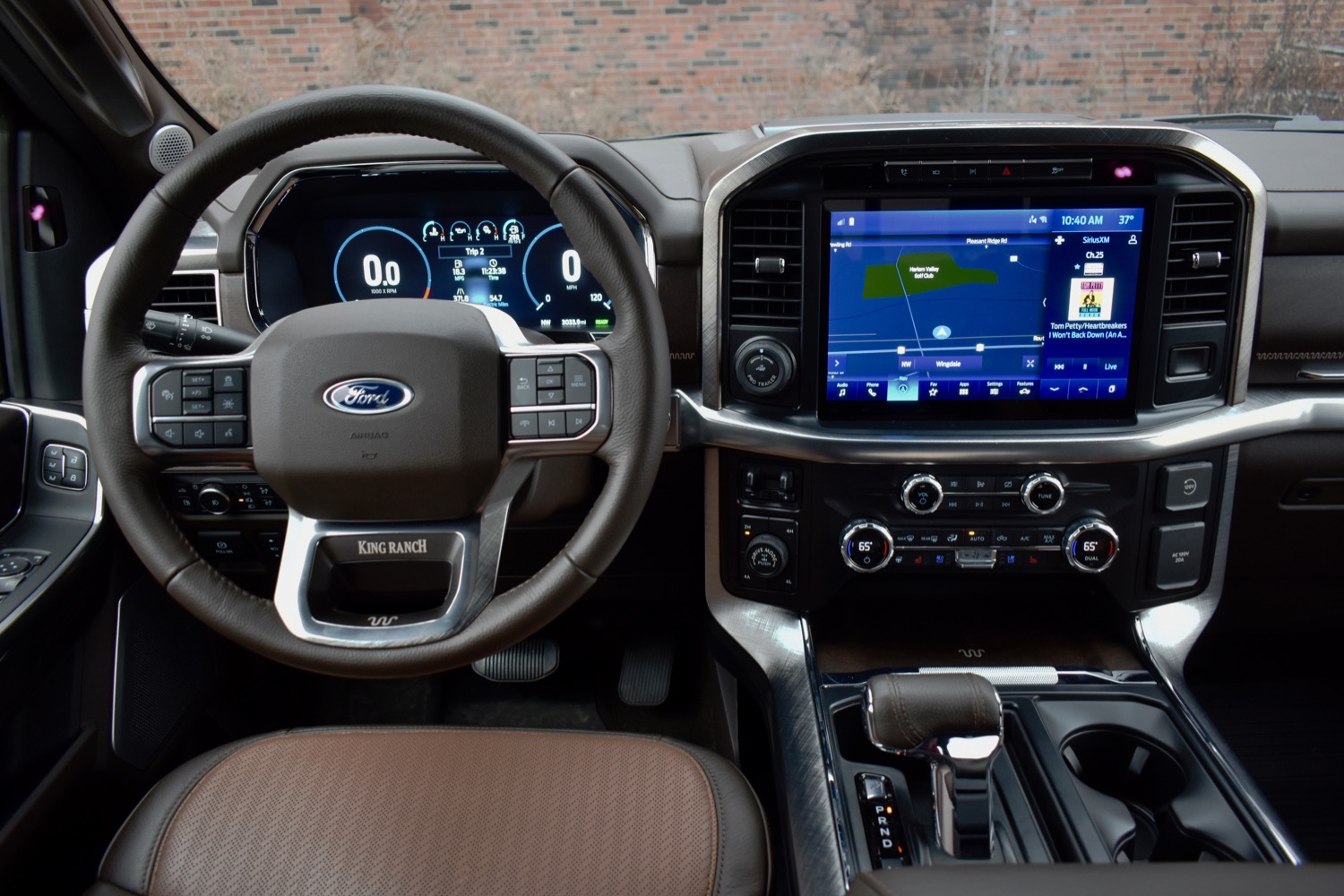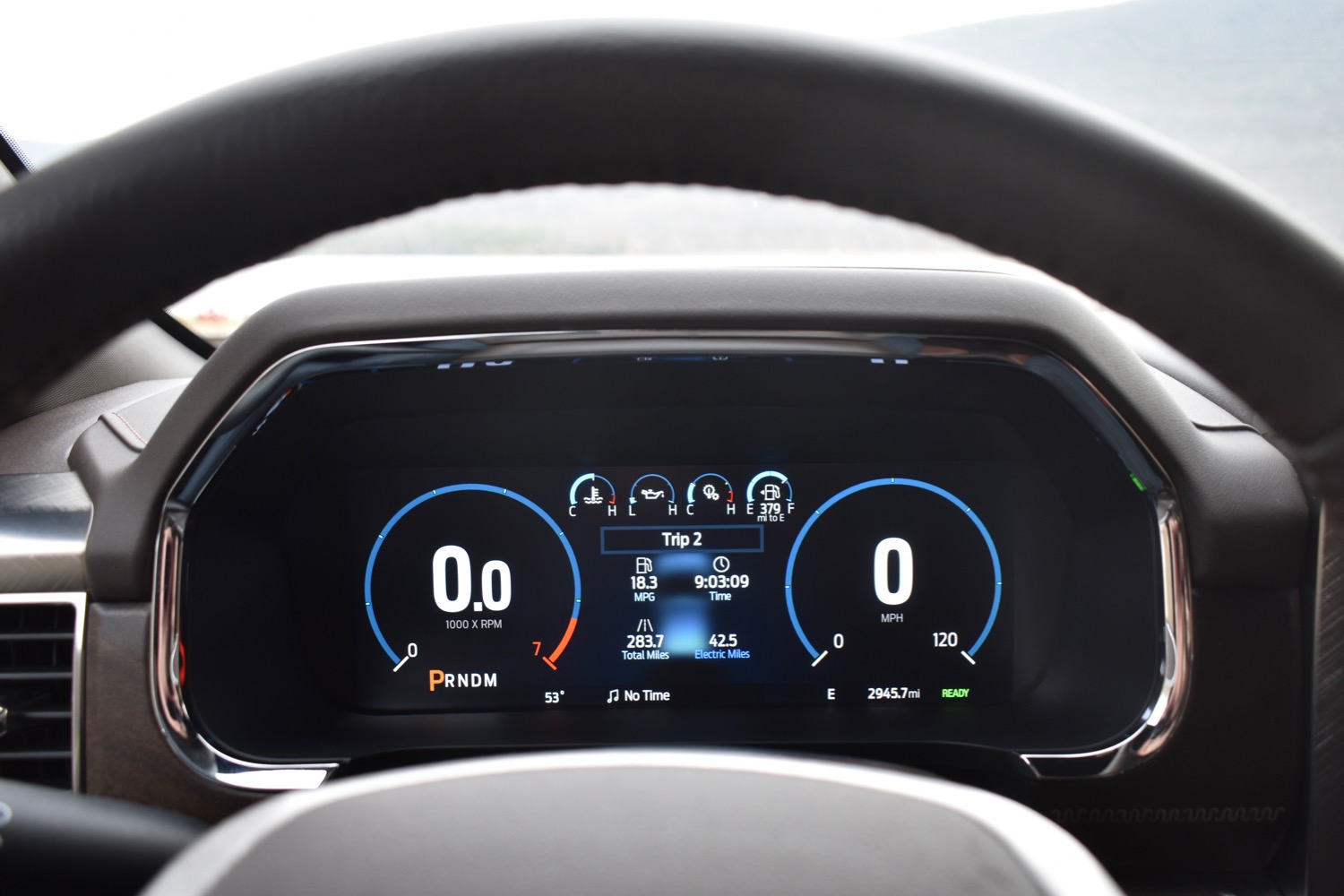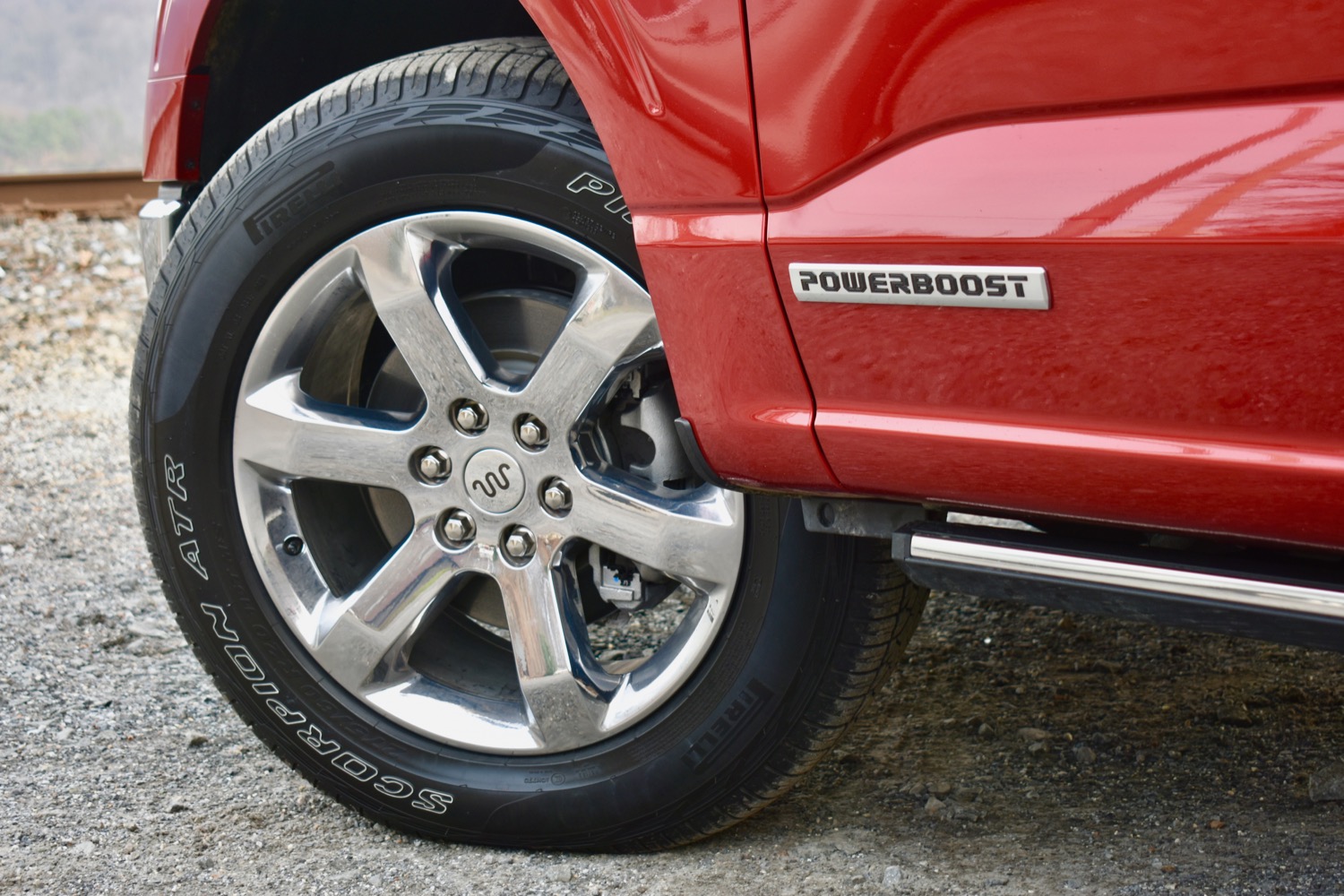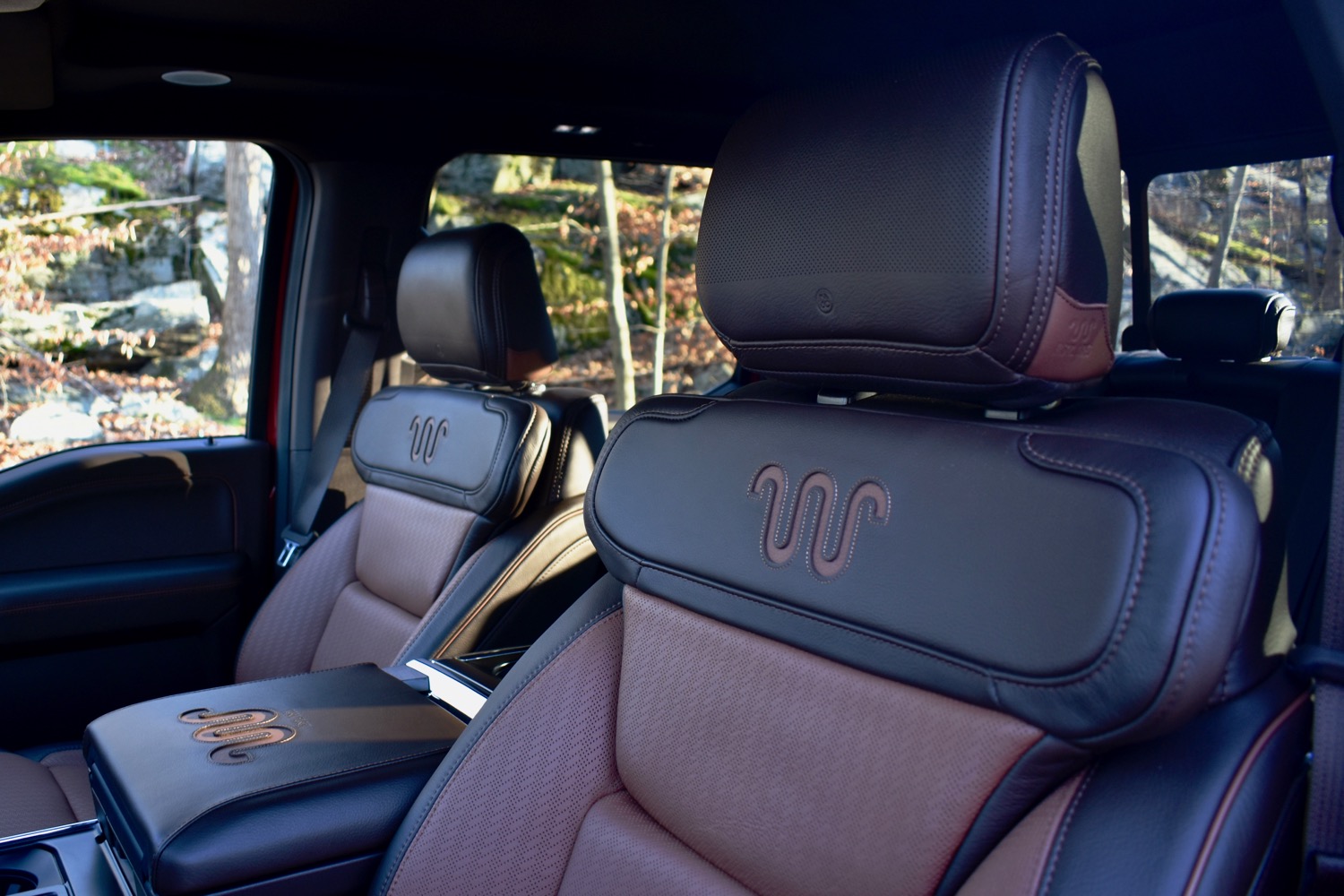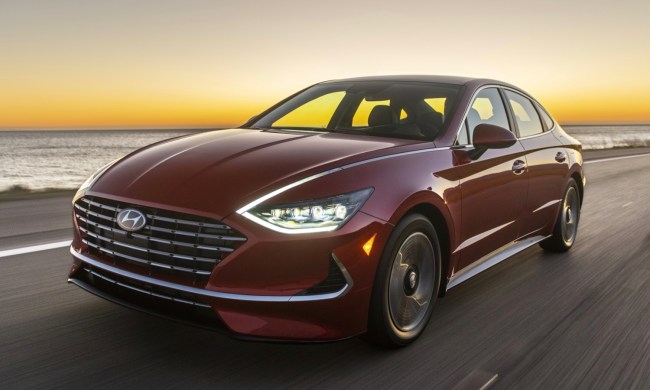People talk about “car shopping” but, statistically speaking, most Americans drive off the dealership lot in a pickup truck. The Ford F-150 is the bestselling vehicle in the United States — and has been for decades. Its main rivals, the Chevrolet Silverado 1500 and Ram 1500, aren’t far behind on the sales charts.
The F-150 has maintained its dominance in part because it has changed with the times. The modern F-150 is no spartan work vehicle. It has the same level of infotainment and driver-assist tech as most passenger cars, with good-enough road manners to serve as a daily driver.
The 2021 Ford F-150 has been redesigned, although the changes aren’t as substantial as the truck’s last redesign (for the 2015 model year). Still, the 2021 F-150 gets the latest Sync 4 infotainment system, new driver-assist tech, and its first-ever hybrid powertrain.
Another reason for the F-150’s proliferation is the number of choices Ford offers. The base XL trim level starts at $30,635 with rear-wheel drive and a two-door cab, but our King Ranch test truck rang up at $76,720. It had the four-door SuperCrew cab, four-wheel drive, the PowerBoost hybrid powertrain, and a host of luxuries — including leather massaging front seats, a twin-panel moonroof, 18-speaker Bang & Olufsen Unleashed audio system, and a 12.0-inch touchscreen.
Design and interior
The exterior styling of the 2021 Ford F-150 is more evolution than revolution. The previous-generation truck introduced a cartoonishly tough theme the new model continues, with headlights that seem too large for the lighting elements they house. As before, the bodywork is made from aluminum to save weight, while the frame is steel.
Like most other truck makers, Ford offers multiple cab and bed styles. You can choose from a two-door regular cab, extended SuperCab with rear half doors, or a SuperCrew cab with four full-size doors. Bed sizes include 5.5-foot, 6.5-foot, and 8.0-foot options (depending on which cab you choose), about the same as Chevy and Ram.
While the SuperCab has small rear jump seats, the SuperCrew is really the only option for regularly carrying more than one passenger. Those additional passengers will be marginally more comfortable in the Ford than its archrival, the Chevy Silverado 1500, as the F-150 sports more rear headroom and legroom. The Silverado boasts more space upfront, however, while the Ram 1500 boasts more rear legroom.
The exterior styling of the 2021 Ford F-150 is more evolution than revolution.
Ford offers a few trick features that Chevy and Ram don’t. The F-150’s shifter can fold away, creating a flat workspace big enough for a 15.0-inch laptop, according to Ford. King Ranch, Platinum, and Limited models can also be equipped with fold-flat Max Recline Seats — allowing you to take a nap in your truck. That’s something we seriously considered doing in our King Ranch test truck, which featured leather seats with heating, ventilation, and massage. Luxury trucks are nothing new, but the 2021 F-150 King Ranch is one of the better ones. The wood trim actually looks real, for a change.
Truck makers also obsess over a feature the rest of us might for granted: The tailgate. Like its predecessor, the 2021 F-150 is available with a fold-up step for easier access to the bed. Ford also etched rulers (in both centimeters and inches) into the tailgate, and power opening and closing is available.
Even those features put Ford behind in the tailgate arms race, however. The GMC Sierra 1500 is available with the six-way MultiPro tailgate, and the Sierra’s Chevy Silverado 1500 twin gets its own version (called Multi-Flex) in early 2021. Ram, meanwhile, offers a tailgate with a vertical-split opening in addition to the conventional fold-down opening, plus Ram Box lockable storage bins in the bed sides.
Tech, infotainment, and driver assist
One of the most significant upgrades for the 2021 F-150 is the infotainment system. The redesigned truck gets Ford’s new Sync 4 system, with an available 12.0-inch central touchscreen and 12.0-inch digital instrument cluster (base models get an 8.0-inch touchscreen and analog instrument cluster). As with the previous Sync 3 system, Apple CarPlay and Android Auto are standard, but with Sync 4, they’re also wireless.
Our test truck had the larger touchscreen and digital instrument cluster, both of which functioned well. The layout of the touchscreen seemed less cluttered than the 15.5-inch Sync 4 touchscreen in the Ford Mustang Mach-E we recently tested, and Ford has provided physical buttons and knobs for functions like climate control and seat heaters. That proved much easier than relying on the touchscreen, as the Mach-E requires.
The digital instrument cluster displays the “Built Ford Tough” logo on startup, making you feel like you’re in a Ford commercial, even after buying the truck. That bit of tackiness aside, the cluster did its job well. Everything is displayed in a clear and bold typeface, with both vehicle speed and engine rpm rendered in easy-to-read large numerals. In our PowerBoost hybrid test truck, the rpm readout even went to “zero” when the truck was in electric mode.
One of the most significant upgrades for the 2021 F-150 is the infotainment system.
The 2021 F-150 comes standard with Ford Co-Pilot360 2.0, which includes forward-collision warning, automatic emergency braking, and automatic high beams. Lane-keep assist, adaptive cruise control, hill-descent control, intersection assist (detects oncoming traffic while attempting a left turn), Pro Trailer Backup Assist, and park assist are available on higher trim levels.
Ford also plans to offer its Active Drive Assist system — which can automatically steer, brake, and accelerate on designated stretches of divided highway — on the F-150, with a driver-facing camera to monitor for distractions. The system won’t be available at launch, however.
Most trim levels will ship with the necessary hardware for Active Drive Assist, with the software to be added later through an over-the-air update or dealership visit for $600. Ford expects the software to be ready by the third quarter of 2021. That should make the F-150 the only pickup truck with this level of driver-assist tech for a little while at least. The GMC Sierra 1500 is slated to get the rival Super Cruise system, but not until late in the 2022 model year.
Driving experience
Ford offers no less than six powertrain options for the 2021 F-150. They include naturally aspirated 3.3-liter V6 and 5.0-liter V8 engines, twin-turbocharged V6 engines displacing 2.7 liters and 3.5-liters, a 3.0-liter Power Stroke turbodiesel V6, and the PowerBoost hybrid powertrain. Each is coupled to a 10-speed automatic transmission, with standard rear-wheel drive or optional four-wheel drive.
The PowerBoost is the only new powertrain for 2021, and the only attempt at a mass-market hybrid powertrain for a pickup truck since General Motors tried it in the early 2000s. It retains the 3.5-liter twin-turbo V6 and 10-speed automatic transmission, but with an electric motor sandwiched in between, and with a 1.5-kilowatt-hour lithium-ion battery pack for electricity storage. This is a variant of the hybrid system that debuted in the Ford Explorer Hybrid.
The F-150 PowerBoost makes 430 horsepower and 570 pound-feet of torque, making it the most powerful 2021 F-150 variant available. The hybrid also boasts more horsepower and torque than the 6.2-liter V8 in the Chevrolet Silverado 1500, or the 5.7-liter V8 in the Ram 1500.
The hybrid powertrain’s torque was awe-inspiring, but its manners weren’t as impressive.
Despite the extra power, the F-150 is actually rated to tow more, 14,000 pounds, with the non-hybrid 3.5-liter V6 powertrain, compared to 12,700 pounds for the hybrid. Ford also quotes a maximum payload capacity of 3,325 pounds with the 5.0-liter V-8 engine. That gives Ford a substantial lead over Chevy and Ram in both payload and towing. Hybrid models also get outlets in the bed, allowing you to run power tools or electronics off the battery pack.
On the road, the hybrid powertrain’s torque was awe-inspiring, pushing the truck along like the shock wave from an explosion. However, its manners weren’t as impressive. The gasoline engine cut in abruptly, making smooth acceleration away from stoplights difficult. Even while on the move, the transition from electric to hybrid mode was rough. Minus the electric motor, we found the 3.5-liter engine and 10-speed automatic combination to be very smooth and refined in the previous-generation F-150, so that might be the better option.
Other than that, it was hard to find fault with the driving experience.
Gas mileage and safety
The PowerBoost hybrid delivers an Environmental Protection Agency-estimated 25 mpg combined (25 mpg city, 26 mpg highway) with rear-wheel drive, and 24 mpg combined (24 mpg city, 24 mpg highway) with four-wheel drive. Those are impressive numbers for s full-size pickup truck, but not a huge leap over other F-150 variants. The 2.7-liter twin-turbo V6 gets the same highway fuel economy, while the Power Stroke diesel is rated at 27 mpg highway. An all-electric F-150 is also on the way, but likely won’t arrive until the 2023 model year.
While Ford is the only automaker offering a hybrid pickup truck right now, that doesn’t mean it claim fuel-efficiency bragging rights. The Ram 1500 EcoDiesel is rated at 26 mpg combined (22 mpg city, 32 mpg highway) with rear-wheel drive, and 24 mpg combined (21 mpg city, 29 mpg highway) with four-wheel drive. The Chevy Silverado Duramax diesel gets 27 mpg combined (23 mpg city, 33 mpg highway) with rear-wheel drive, and 24 mpg combined (22 mpg city, 26 mpg highway) with four-wheel drive.
Ford offers a three-year, 36,000-mile bumper-to-bumper warranty and five-year, 60,000-mile powertrain warranty, which is about the same amount of coverage you get from Chevy or Ram.
Full crash-test ratings from the Insurance Institute for Highway Safety (IIHS) and National Highway Traffic Safety Administration (NHTSA) aren’t available yet. However, the IIHS did give the 2021 model its top “good” rating for roof strength by carrying over results from the previous-generation model, which had a similar roof structure.
How DT would configure this car
While we enjoyed cruising around on a cold, rainy day in our King Ranch test truck’s heated leather seats, we wouldn’t enjoy paying the truck’s the $76,720 sticker price. Luxury features aren’t necessary in a pickup truck, and it’s possible to get plenty of tech and capability for substantially less money.
We’d start by moving down from the King Ranch trim level to the XLT. We’d then select four-wheel drive and the SuperCrew cab. While the PowerBoost hybrid powertrain is available on the XLT, we’d go for the non-hybrid 3.5-liter twin-turbo V6 instead. The hybrid powertrain doesn’t offer a substantial enough increase in gas mileage to justify its extra cost (it’s $1,900 more than the stand-alone V6), and the nonhybrid option still boasts a robust 400 hp and 500 lb.-ft. of torque.
From there, we’d add the FX4 package to the give our F-150 some off-road capability, and the Co-Pilot360 Assist 2.0 package to get the full complement of driver aids (it adds adaptive cruise control, traffic sign recognition, intersection assist, and evasive steering assist). The latter comes bundled with a 360-degree camera system.
Our final addition would be the Tow Technology package, which includes Pro Trailer Backup Assist and a trailer-brake controller. Ford doesn’t let customers combine these features with the Max Trailer Tow package, which enables the F-150’s maximum 14,000-pounds towing capacity, but we would rather have tech that makes towing easier than extra towing capacity we might not use.
With those boxes checked, our ideal F-150 comes out to $52,610. That’s not exactly cheap, but it’s about what you should expect to pay for a well-equipped full-size pickup these days.
Our take
The 2021 Ford F-150 doesn’t make as big of an impact as its predecessor. The previous-generation F-150 was a major rethink of what Ford’s bestseller could be, so it was admittedly a tough act to follow. The 2021 model builds on its predecessor’s strengths, with good ride quality and a strong powertrain lineup, while adding more tech in the form of the Sync 4 infotainment system and, eventually, Active Drive Assist.
That’s enough to keep the latest F-150 ahead of the Chevy Silverado 1500 and GMC Sierra 1500 twins, which didn’t move the needle substantially with their last redesigns. The Ram 1500, on the other hand, comes closer to the Ford with its own 12.0-inch infotainment touchscreen and four-corner air suspension. The F-150 beats the Ram on payload and towing capacity, however.
Ford’s PowerBoost hybrid powertrain may be the only one of its kind in a full-size pickup truck, but only ekes out small gains in gas mileage. The diesel engines available in the Silverado and Ram 1500 come awfully close to matching its mpg, and surpass it in certain categories.
When considering a pickup truck, it’s also important to think about how you plan to use it. If you need to tow and haul heavy loads, the F-150 is a good option. If you’re just throwing some camping supplies or a dirt bike in the bed, however, a smaller midsize truck like the Ford Ranger or Jeep Gladiator might be a better choice.
Should you get one?
Yes, but only if you need to tow something big.
